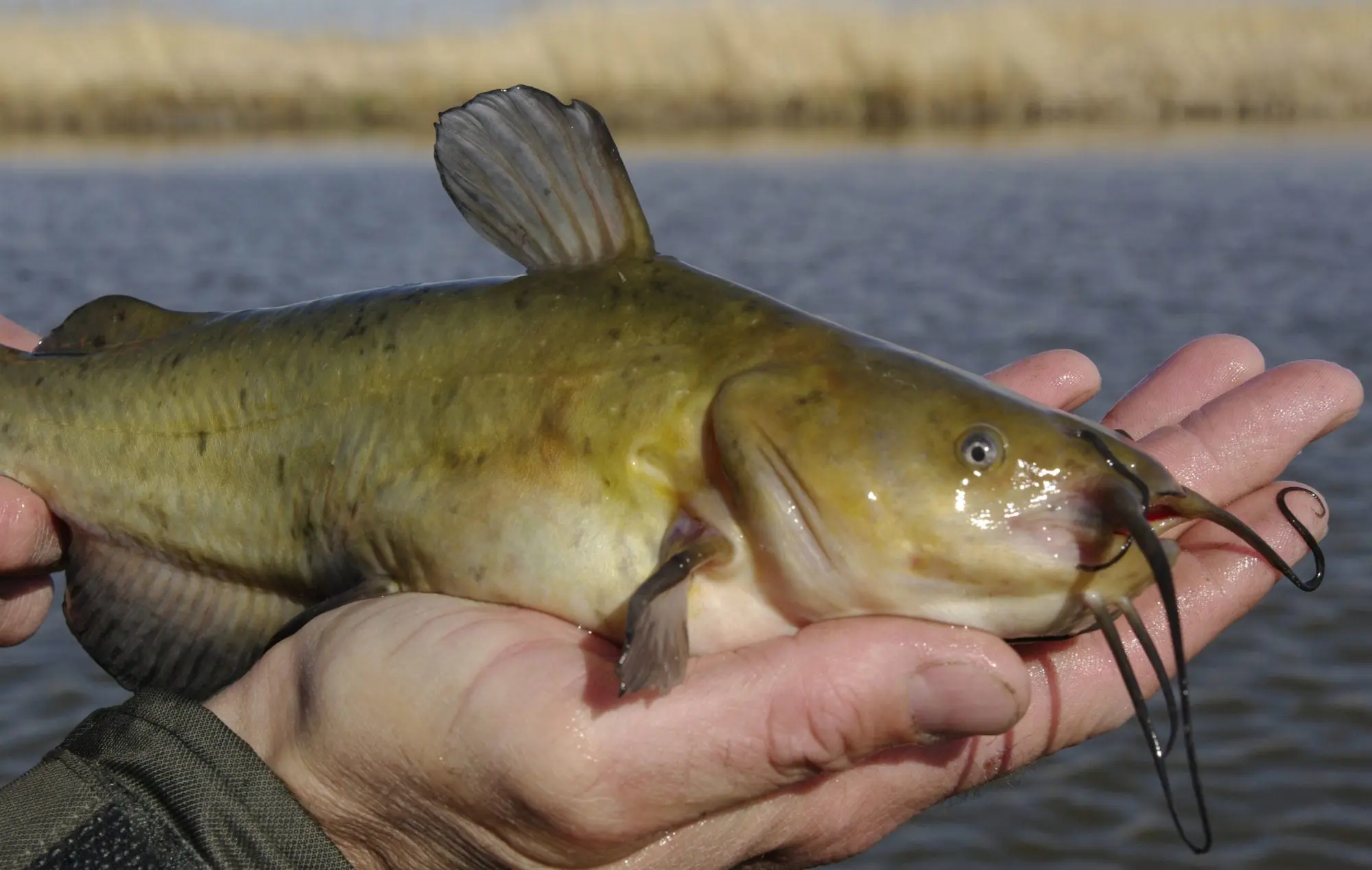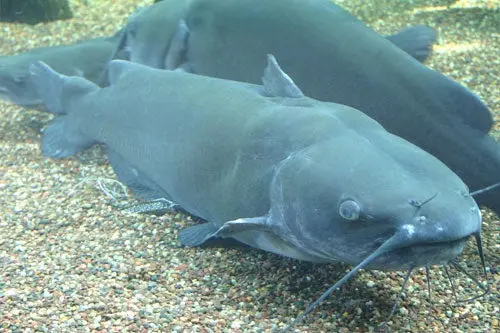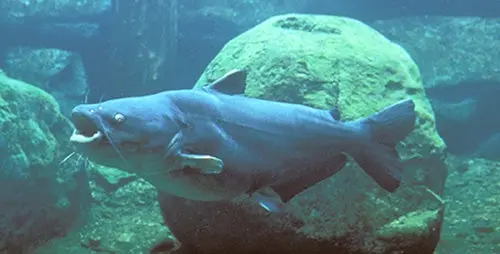In 50-some years of catfishing and writing about catfishing, I’ve often fielded the question, “What do catfish eat?” The short answers is, whatever they can fit into their mouths, including aquatic insects, crayfish, minnows, sunfish, crappies, perch, salamanders, frogs, mice, and even baby ducks and aquatic vegetation. The long answer is all of that and more, plus what you need to know about catfish eating habits to help make you a more successful angler.
Two key things to remember when it comes to catching catfish
are, first, that matching the hatch isn’t only for trout and trout anglers, and second, you can’t be afraid to step out of the box when it comes to what you’re putting on the hook or snapping onto that swivel. After all, Ivory soap and chunks of hot dog soaked in strawberry Jell-O are both effective catfish baits. So, with that in mind, here is the long answer to not just “What do catfish eat?” but also, “What are the best catfish baits
to use in order to catch more of them?”
What Do Catfish Eat: Table of Contents
What Do Bullhead Catfish Eat?
Best Baits and Lures for Bullheads
What Do Channel Catfish Eat?
Best Baits and Lures for Channel Catfish
What Do Blue Catfish Eat?
Best Baits and Lures for Blues
What Do Flathead Catfish Eat?
Best Baits and Lures for Flatheads
FAQs
What Do Bullhead Catfish Eat?

A brown bullhead catfish. Courtesy of the American Catfish Association
Bullheads are small members of the catfish family, typically measuring 9 to 14 inches long and weighing a pound or less. Bullheads are omnivorous bottom feeders that do most of their eating at night, which is also when most folks fish for them. There are tree subspecies—black, brown, and yellow—and they all eat more or less the same things, including the following.
Aquatic insects, such as hellgrammites, dragonfly nymphs, mayflies, and damselfly nymphs
Crayfish
Leeches
Worms
Mollusks and crustaceans
Minnows
Aquatic vegetation, including algae and duckweed
Best Baits and Lures for Bullheads
Despite how varied the bullhead’s diet is, you really only need to know about one bait to catch scads of them; a red worm or piece of nightcrawler fished on the bottom with light or even ultra-light tackle has no equal. Scented soft-plastic baits, like Berkley GULP Pinched ‘Crawlers
or grubs can work, but you can’t beat the simplicity and effectiveness of just soaking a worm—which is a big part of why bullhead fishing is perfect for getting the kiddos out on the water.
What Do Channel Catfish Eat?

Channel catfish. Courtesy of the American Catfish Association
Channel catfish are the most common and widely distributed cats in the country. They can grow to 50 pound or more, but the average channel cat is well under 10 pounds and anything over that mark is considered a good one on most fisheries. Channels catfish are opportunistic omnivores with remarkable senses of smell and taste. Sometimes called the “swimming tongue,” these catfish actually have taste buds distributed over their entire bodies (a fact that makes me a little jealous). These taste buds are especially concentrated in the whiskers, which, combined with the fish’s sense of smell, allow channel cats to find all sorts of food day or night and in clean or murky waters, including the following.
Crayfish
Minnows, shad, and young game fish, including sunfish, crappies, and yellow perch
Shellfish, including clams and mussels
Salamanders, frogs, and young water snakes
Rodents, including mice, voles, and shrews, and other small mammals
Baby ducks
Aquatic and land-based insects and grubs, including catalpa worms
Vegetation, including ripe berries, such as mulberries
Dead and decomposing material
Best Baits and Lures for Channel Catfish
Nightcrawlers and crayfish rate high, as do cut shad, chicken livers, hot dog chunks, or non-marketable “cull” shrimp. Baits can be fished on or near bottom, or, given high water, under a slip bobber along the edge of creek channels or among flooded vegetation. Channel cats can be aggressive at times, responding well to artificial lures like twistertail grubs, crankbaits, (including Shad Raps
), or slow-rolled inline spinners.
What Do Blue Catfish Eat?

Blue catfish. Courtesy of the American Catfish Association
Regarded more as a trophy game fish than the previous species, the blue catfish is sometimes confused with the channel cat. However, blues will never sport the channel cat’s black spots, and the anal fin on the blue is straight rather than rounded. Blues in the 10- to 40-pound class are relatively common, and blue cats pushing 100 pounds aren’t unheard of. Along with flathead catfish, blues are a top-of-the-food-chain species in many waters. Here’s a short list of their favorite foods:
Aquatic insects and invertebrates (for young blues)
Crustaceans such as crayfish and crabs
Shellfish, such as fingernail clams and mussels
Frogs, snakes, salamanders
Shad, menhaden, bluegills, perch, and small bass
Best Baits and Lures for Blues
Fresh shad, either whole or cut, is the No. 1 best bait for blues, hands-down. Add a little Shad, Garlic, or Anise Smelly Jelly
, or give your bait a spritz of BANG aerosol scent
, and it’s game on. Remember, all cats have sharp noses, so using natural scents while keeping bad smells—fuel, sunblock, or insect repellents—off your hands can make all the difference. As for artificial lures, shad imitations or 4- to 6-inch grubs on a lead-head jig will work when the fish are feeling feisty.
What Do Flathead Catfish Eat?

Flathead catfish. Courtesy of the American Catfish Association
Flathead catfish has a mottled olive-brown coloration and lack the deeply forked tail fin of the channel or blue cat. The fish’s namesake “flat” head is unmistakable, as is the jutting lower jaw that extends noticeably beyond that of the upper. Flatheads are apex predators, preferring live food over dead. Found primarily in slower current in larger rivers or streams, they usually relate to some type of cover, such as log jams, brush piles, or rock humps. Ten- to 40-pounders are typical, though some flatheads can push the 100-pound mark. Their diet is less varied than other cats, including primarily the following:
Fish large and small. Flatheads don’t discriminate, even eating their own kind
Crayfish, crabs, and shellfish
Best Baits and Lures for Flatheads
It’s a toss-up between which is the better bait for flatheads—a live green sunfish or a small bullhead catfish. For bank/ditty poles, the ultra-hardy bullhead often gets the nod. Cut bait, such as shad, can be effective, but in most places (where legal, check regs), you’re better off fishing a hand-sized sunfish, bluegill, sucker, or bullhead. If you want to try something different for flatheads, I have two words for you: big goldfish. (Again, check regs first.)
FAQs
Q: Do catfish eat other fish?
Yes, catfish will feed on other fish, including, minnows, bluegills, perch, juvenile bass, and other small gamefish. Flatheads
Q: What is the best catfish bait?
Nightcrawlers are best for bullheads. Crayfish, cut shad, chicken livers, hot dog chunks, and nightcrawlers are top picks for channel catfish. Fresh cut shad is best for blues and live green sunfish or small bullhead catfish (where legal) are best for flatheads.
Q: What are catfish most attracted to?
Catfish feed on a variety of bait, but anglers often use chicken livers, meat chunks, and crayfish to lure big bullheads, channels, blues, and flatheads.
![Field & Stream [dev]](https://images.ctfassets.net/fbkgl98xrr9f/1GnddAVcyeew2hQvUmrFpw/e4ca91baa53a1ecd66f76b1ef472932b/mob-logo.svg)





